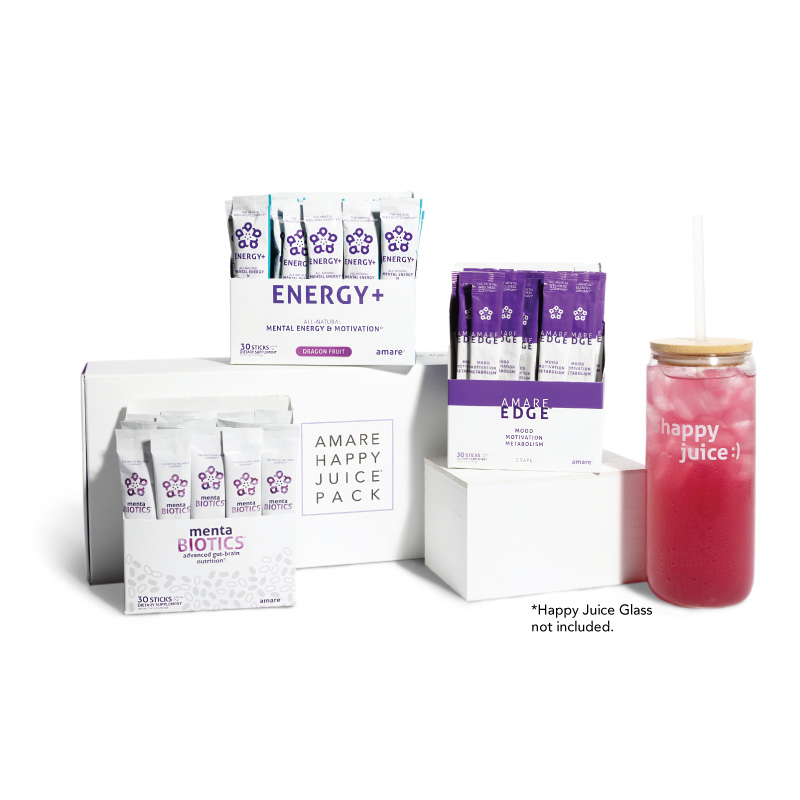Listen on: Apple Podcasts | Spotify
What makes a multivitamin a “high-quality multivitamin?” Why is there such a big difference in price between what your healthcare practitioner recommends, and what you find in retail stores? Why do you even need a multivitamin?
Clients and VIGOR Training members have asked me these questions numerous times. I’ll provide the answers below.
I ran the nutritional supplement brand for one of the top fitness companies in the United States for several years. I formulated or helped formulate numerous supplements, including multivitamins.
During the process, we also vetted manufacturers, decided on which forms of micronutrients to use and considered things like fillers and excipients, which few people consider when buying their supplements.
I also worked for a year with one of the most respected nutritional products manufacturers in the world. I designed and formulated products, and have been “behind the scenes” in the supplement manufacturing world.
Like most things in life, you get what you pay for. Hopefully, by the end of this, you’ll understand why you’re better off investing a little more in your supplements for products that work, rather than buying what’s cheap and might not be as effective.
Once you understand why you need a multivitamin, check out my post on the best multivitamins to buy.

Feel Better Fast. Guaranteed.
Energy+, EDGE, and MentaBiotics make up the Happy Juice supplement stack, with ingredients clinically proven to:
- decrease anxiousness scores by 55%
- decrease irritability scores by 60%
- decrease fatigue by 64%
- decrease anger 54%
- decrease tension by 45%
- decrease confusion by 43%
- decrease overall distress by 49%
- increase good bacteria by 70%
- decrease negative mood by 105%
- increase positive mood by 211%
Why You Need a Multivitamin
When I refer to a “multivitamin,” I’m really talking about a multi-vitamin, multi-mineral supplement, or a supplement that includes most, if not all, of your essential micronutrients.
Micronutrient: essential vitamin or mineral that must be consumed through diet or supplementation to maintain normal cellular and molecular function.
If you don’t use a multivitamin today, here are three reasons why I believe you need to start.
1. Vegetables and fruit are not as nutrient-dense as they once were.
Though farming production has improved in many ways, growing produce bigger and faster comes at a cost. Super-sized fruit and vegetables lack the nutrient density they once had.
Also, farming has depleted soil of many minerals it once contained. The plants cannot absorb what is no longer there.
Research shows that today’s produce has less protein, calcium, phosphorus, iron, riboflavin, vitamin C, magnesium, zinc, vitamin B6, vitamin E, and vitamin A than in the mid-1900s.
As one study put it, you’d need to eat eight oranges today to get the same amount of vitamin A that a single orange contained when our grandparents were young.
2. Higher mental and physical stress levels require more micronutrients.
We encounter more oxidative stress, emotional and physical stress, pollution, and other toxins than ever.
We also get less sleep, movement, and time outdoors, which hampers your ability to recover from those stresses.
Vitamins and minerals play essential roles in helping us deal with these stressors and maintain healthy metabolic function.
Increased metabolic and enzymatic demands during times of stress may also be associated with increased micronutrient utilization and subsequent depletion. Moreover, stress is associated with increased oxidative stress and inflammation. Through their anti-inflammatory and antioxidant mechanisms, nutrients may be utilized at greater concentrations in response to these processes. It is also possible that increased micronutrient excretion through urine and sweat may contribute to reduced bodily nutrient stores. Perspiration is increased during times of physical and psychological stress, possibly accounting for increased excretion of certain micronutrients through sweat. Stress and increased cortisol output via its effect on aldosterone levels may also contribute to changes in the urinary excretion of associated minerals and electrolytes, thereby modifying nutrient concentrations. Finally, stress is also associated with appetite changes; therefore, reduced nutrient concentrations could be an artifact of dietary changes.
Lopresti AL.
Stress affects your micronutrient needs, whether it’s self-induced or not.
3. The quality of our food isn’t what it once was.
Do you know anyone who eats 9-12 servings of vegetables and fruit every day?
And, even if you did, I already explained why those 9-12 servings wouldn’t contain the micronutrients they used to.
On top of that, food processing eliminates much of the micronutrient content, even when they provide the protein, carbs, and fat we need. Add to that the fact that many indulge in sugar-filled foods and excessive amounts of alcohol, which also increase the demand for certain micronutrients.
What about those who say multivitamins don’t work?
I put very little stock into research on multivitamins as a whole, but instead appreciate very much the research that’s been done on individual nutrients, which helps in understanding how they are all important together.
To conduct a solid study of a high-quality multivitamin, you’d need thousands of people using the same multivitamin every day for decades. And you’d need a placebo group that didn’t get it. It simply isn’t practical.
Most multivitamin research was conducted with cheap, low-quality multivitamins, which often contain 100% or less of the RDI. Most also contain low-quality, poorly-absorbed forms of the nutrients. I would not expect to see much of a change from the use of these kinds of supplements, either.
Other studies on multivitamins are based on observational data. In these studies, a researcher might ask a participant, “Over the past 20 years, how often have you used a multivitamin?” This type of data is notoriously inaccurate. Most people exaggerate their response when they’re asked about something they think they’re supposed to do, and underestimate their response when it’s something they believe they’re not supposed to do.
If you were asked that question, you might reply with “I use them daily,” even though you’ve had the same bottle of multivitamins in the cupboard for the past five years. And it hasn’t been opened yet.
So, in my opinion, when you can’t rely on a long-term, double-blind, placebo-controlled study, you have to use reason or common sense.
Anyone with a basic knowledge of nutrition understands the negative effects a deficiency in a single micronutrient creates. A multivitamin helps eliminate the chance of developing a deficiency.
Read also: How to Use Critical Thinking With Essential Oils Cynics.
Who should use a high-quality multivitamin?
I believe anyone who can use a high-quality multivitamin should use one. I’ve taken a multivitamin since I was in high school and always recommended it as part of The Foundational Five.
That said, there are a few life stages when consuming sufficient micronutrients is most critical:
- Men and women planning to have children. Most people think of the mother, but a father’s nutrition status can influence his sperm, which can influence the future health of the child.
- Mothers during and post-pregnancy
- Children under the age of five
When you think about everything that has to go right, during the time between a sperm fertilizing an egg, and a healthy baby being born nine months later, you appreciate the importance of a mother’s nutrition.
During the first five years of life, that baby’s brain develops, its skeleton forms, the rest of the nervous and muscular systems create coordinated movement, etc. What a great time to ensure his or her nutrient intake is optimal!
If you have the opportunity to start your child’s life off with the best building blocks of nutrition, why wouldn’t you?
Based on the reality of today’s lifestyle, and the nutrient density of the foods we eat, in my opinion, everyone needs a high-quality multivitamin.
If you have specific needs based on your stage of life, or state of your health, or your fitness goals, you’ll probably want to add some individual nutrients on top of your high-quality multivitamin.
For example, I take the Thorne Multi-Vitamin Elite AM/PM, but I also take additional magnesium and calcium, extra zinc, and vitamin D. A pregnant woman might choose to take additional folate, or a woman dealing with anemia might take extra iron bisglycinate.
Read also: Research Shows Dietary Supplements Reduce COVID-19 Risk.
What to Look For in a High-Quality Multivitamin
The following are some of the criteria I use to separate the superb from the subpar.
Natural folate or folic acid?
This is the first thing I look at when judging any nutritional supplement. It would be like if I were dating and looking for a mate. If she smoked cigarettes, it would be a non-starter for me, no matter what other positive characteristics she possessed.
Seeing folic acid on a supplement label tells me the brand either isn’t interested in producing a quality product, or doesn’t know what that is.
Most people associate folic acid with pregnancy and a reduced risk of neural tube defects. It’s essential for much more.
Low folate levels can cause:
- depression
- infertility
- fatigue
- difficulty concentrating
- irritability
- headaches
- heart palpitations
- shortness of breath
- changes in skin, hair or fingernail pigmentation
Low folate levels in adults also raise homocysteine, which increases the risk of cardiovascular disease, stroke, dementia, and certain cancers.
So folate is super-important. That’s why fortification of grain-based foods with vitamin B9 began in 1988.
Unfortunately, most dietary supplements and fortified foods do not use natural folate.
Instead, they use folic acid, which is a highly-absorbed, but poorly-converted, synthetic form of vitamin B9.
A significant percentage of people cannot convert folic acid to folate. Instead, folic acid levels remain high in the body. The elevated folic acid can mask deficiencies in vitamin B12, affecting energy levels and mental function, and can increase the risk of cognitive decline with aging.
Those who cannot properly convert folic acid to folate may also be at a greater risk of cancer.
Look for a multivitamin that contains natural folate – 5-MTHF, methyltetrahydrofolate, Metafolin®, Quatrefolic™, etc.
Methylcobalamin or cyanocobalamin?
Both methylcobalamin and cyanocobalamin are forms of vitamin B12. Vitamin B12 is important for red blood cell and energy production.
Cyanocobalamin is a cheap, synthetic, poorly-absorbed form of vitamin B12.
Note: I’m not suggesting all synthetic nutrients are detrimental to health. Some can be produced as an exact match to what’s found in nature. I’m not one that believes synthetic=bad. But there are some cases, like folic acid and cyanocobalamin, where that would be true, in my opinion.
To metabolize cyanocobalamin, your body must donate a methyl group, which can decrease glutathione levels. Glutathione is your body’s primary antioxidant.
Methylcobalamin already has the methyl group attached, just as nature created it. So, your body absorbs it properly and you won’t compromise your internal antioxidant system.
High-quality mineral chelates or mineral salts?
You don’t absorb plain minerals like calcium, magnesium, and zinc well. You absorb mineral salts, such as calcium citrate, a little better. The best-absorbed minerals are mineral chelates.
And of those, you absorb minerals bound to the amino acid glycine the best. These are called mineral glycinates, or mineral bisglycinates.
These mineral chelates cost considerably more than other forms, but the point of taking them is to absorb them, right?
That’s why I usually encourage people to use a multivitamin that contains the glycinate, or bisglycinate form of most minerals.
With all that said, bisglycinate minerals take up a lot of space.
Because of the size, certain minerals like calcium and magnesium take up so much space, that it isn’t possible to squeeze them into most multivitamins at optimal doses.
That’s why I take extra magnesium and list magnesium as one of the Foundational Five, in addition to a high-quality multivitamin.
K2 or K1?
Vitamin K2 appears to be more cardio-protective than vitamin K1. We also tend to get more K1 through other foods and nutrition.
When a manufacturer takes the extra steps to include K2, which of course, is more expensive than K1, it tells me they put some serious thought into the formula.
Summary
There’s no shortage of options when it comes to high-quality multivitamins, so it’s easy to get confused and overwhelmed. I hope this helps you weave through the many options available. And if you’re still unsure, and need more guidance based on your needs, post a question in the VIGOR Training Facebook group.




Tom,
I have been following you for some years now and look forward to your emails.
In particular your article on multivitamins was very interesting and cleared up a few questions I had on Young Livings Master Formula. I am overwhelmed at times about taking supplements and don’t want to get caught up in taking too many. Where to draw the line has always been my thought. Spending your day taking supplements is not my idea of fun and I often worry about taking too many.
I’m 76, have RA and just had a second hip replacement.
I am a YL member so I think it’s time to try the Master Formula and reduce some of the supplements I have now, most of which are from YL.
I hear you Carol. It’s sometimes hard to know when your supplement cupboard becomes overkill. I usually recommend starting with The Foundational Five, and one or two over time as goals or needs dictate. Here’s a little more about The Foundational 5: https://tomnikkola.com/best-health-supplements/